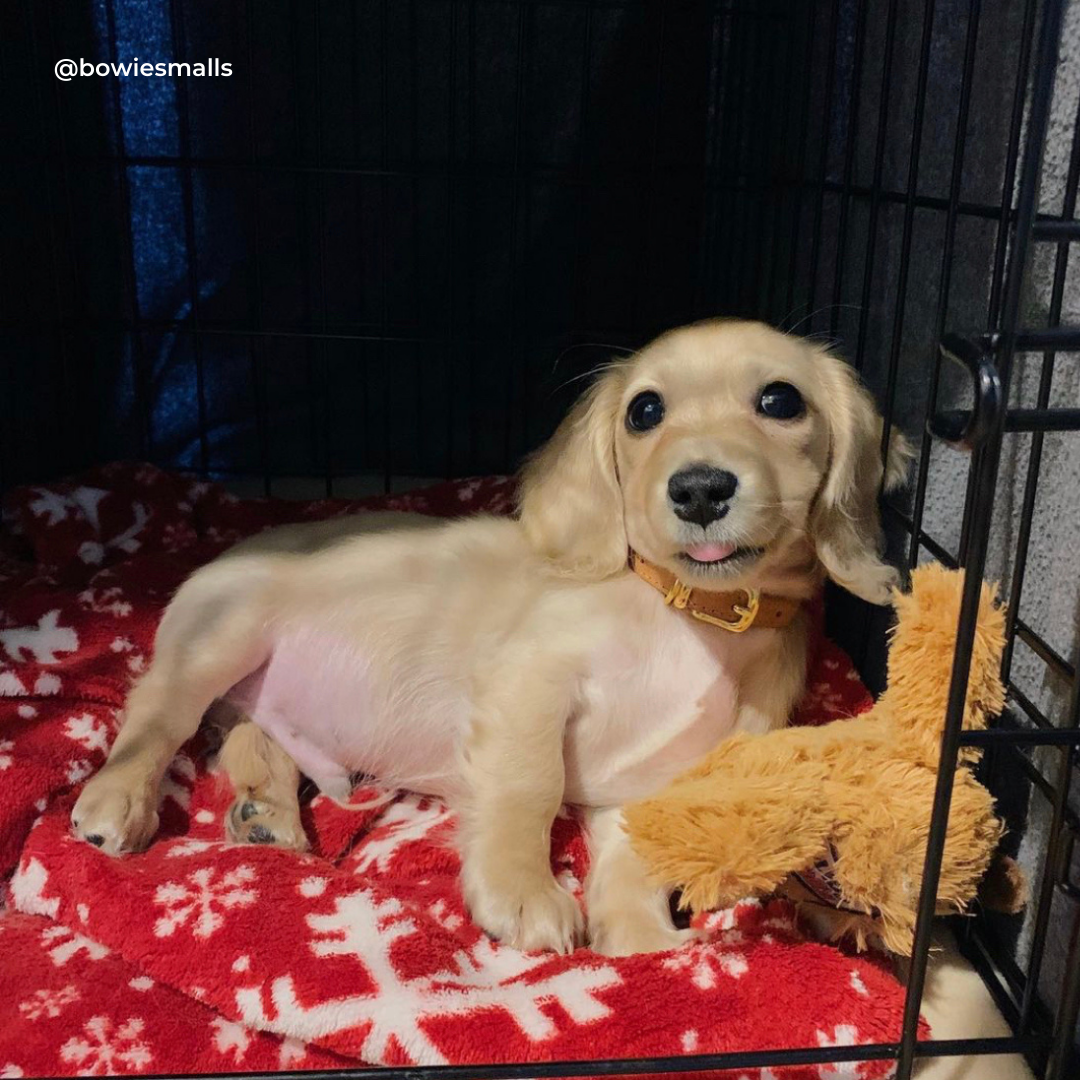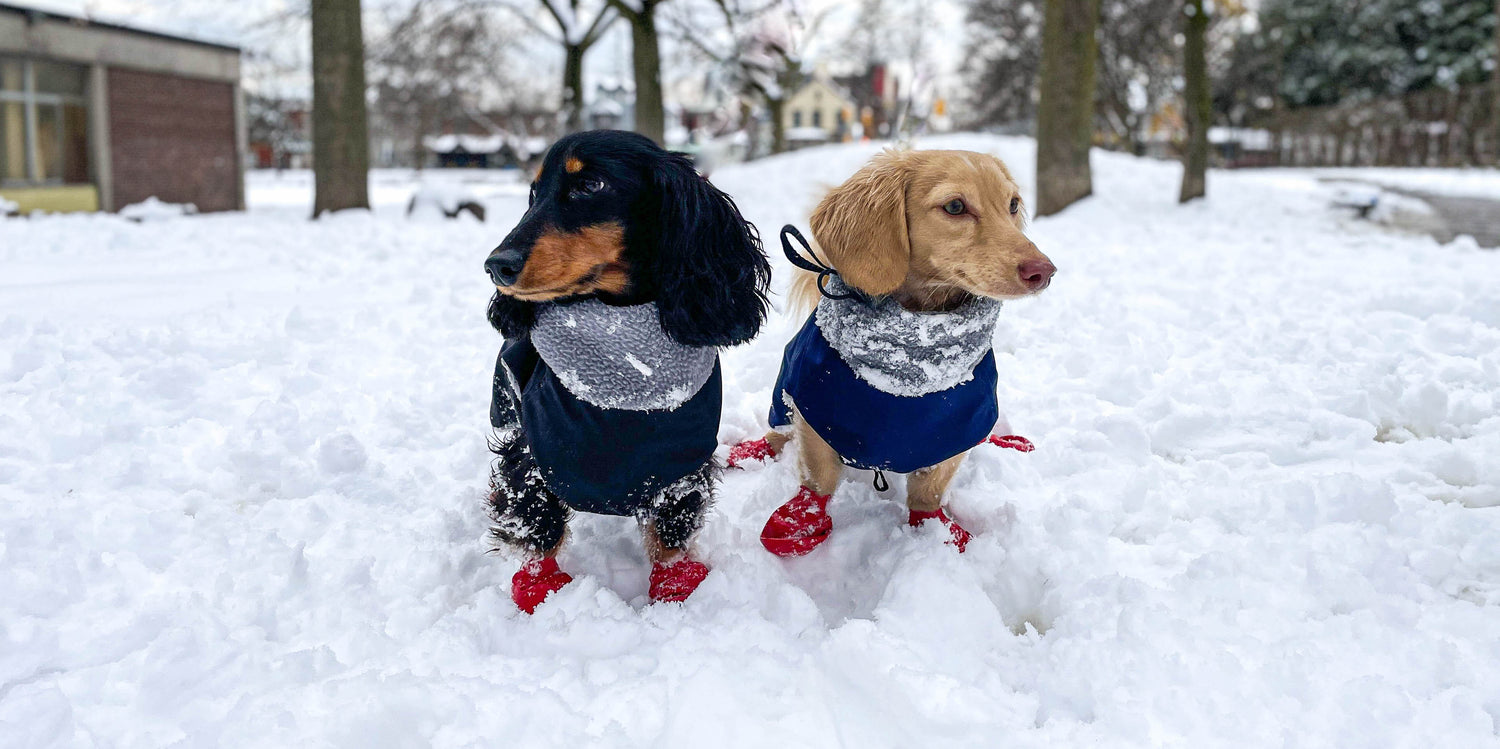Disclaimer: I very much am a pro-crate training person. If the crate isn’t for you, that’s totally cool. I have a bunch of other posts on things like mental stimulation, desensitization, and puppy blues so if this doesn't suit your fancy, hopefully something else does.
Crate training my dog was the most challenging part of having a dachshund puppy. Dachshunds are notoriously challenging to crate train because they are little dogs who know what they want and are often prone to separation anxiety often being referred to as velcro dogs because they always want to be with you. However, I can say with 100% certainty that persevering through the challenges and fully crate training my puppy was the absolute best thing I ever did as a dog mom.
Benefits of crate training
There are so many reasons to crate-train your puppy. First of all, dogs are den animals. They actually feel safest when they’re in a small space. On top of that, nobody can have eyes on their dog 24/7. The crate is a safe space for your dog to be when you’re not able to watch them where you can be 99.9% sure that they are not getting into something they shouldn’t... like eating the power cables to your TV or swallowing the fluff from inside their squeak toys.
Another benefit to crate training your dog, is it gives them their own space. Kind of like a bedroom. When they’re feeling overwhelmed or just need a minute, they can go into their own little space to chill out. There have been times that my puppy was feeling a little too overwhelmed and he has taken himself into his crate and fallen asleep. There have also been times where he’s getting a little too worked up and over excited so we put him in his crate and he immediately falls asleep. Almost like a toddler who gets too excited when they get overtired.
Also, if your dog ever has to stay at the vet for the day (or overnight) (touch wood it doesn’t happen), if your dog is already used to their crate, the experience of being confined to a crate will be significantly less traumatic for your puppy.
Finally, if you ever decided to go on vacation with your dog, you can bring their crate with you and then your routine that you worked so hard to set up, can stay in place. You’re also guaranteed to give your dog a safe and comfortable place to sleep even when they’re not in their home.
Demystifying the Common Myths of Crate Training
There are so many myths about crate training and why you absolutely should not even consider crating your dog. Let’s talk about a few.
The first and most pervasive argument for not crate training a puppy is the argument that crate training = abuse. This rumour caught fire because people equate crate training with animals kept in solitary confinement for extended periods of time and are never allowed out to relieve themselves or stretch their legs. That is not the purpose of crate training. The crate is to be used for short periods at first and can be extended up to 4-5 hours at most at a time (with the exception of overnight use). Your crate is not your puppy-sitter and your dog should not spend the full day in a crate without being allowed out for breaks.
The second rumour that I hear over and over again is that crating your puppy will damage your relationship with your dog. Ultimately, this argument is largely anecdotal and doesn’t have any real evidence and so is the argument against this. The act of crate training your dog will not ruin your relationship with your puppy. If you neglect your puppy, yes, you could ruin your relationship with your puppy but this happens just as frequently with un-crated dogs. There is no evidence that crating equals a poor relationship or vice versa.
The final rumour I’m going to address is that crate training your puppy will cause aggression. If you make the crate a negative, punishment-centered, scary place for your puppy, they could definitely develop some aggression towards you and the crate itself. But the crate is not the problem. The issue here is that the crate has become a weapon used against the puppy. The crate should be used as a positive, happy, and safe space for your puppy.
Crate Training Tips
We’ve talked about the benefits of crate training, along with the most common myths surrounding crate training. Let’s talk about a few tips I have found incredibly useful when I was working to create a wonderful relationship between myself and my puppy, as well as my puppy and his crate.
Getting used to the crate was my #1 goal when we first brought our puppy home. We started pretty easily by just leaving the door to the crate open, he could venture into it as he got more comfortable with his new home.
1. Meal Times in The Crate
We started by feeding our new little guy in his crate. The door was open so he could get out whenever he wanted. This immediately created a link between good things and his crate. When he was out of the crate, we would throw a few little treats inside the crate so when he would eventually roam into it, he would find yummy treats! Score!! In his brain he’s thinking “oh wow! There are always good things in this cave! I like it in here”.
2. Put their Bed in the Crate.
If you’re using a dog bed, put it inside the crate! I’m writing this from the mind of a dachshund mum and doxies are notorious cuddlers. Put a cozy, cuddly bed in the crate so that it’s comfy and enticing. Eventually, your puppy will venture in, and just lay down. For the first few times they lay down, keep the door open so they can come out whenever they want. Chances are, they’ll fall asleep on their own which is a good sign that they’re getting comfortable in there!
3. Get on a Schedule
Getting yourself and your puppy on the same schedule is one of the most advantageous things you can do to help with both crate training and potty training. Plan your days around when your puppy needs to pee, poop, eat, sleep, play, and poop. This will take some careful observation by you in the first couple days of your puppy being at home. Lucky for you, I created a free schedule tool that you can use to get a better understanding of your puppies habits and needs. The template is based off of what I did when I first got my puppy which literally was noting down anything he did and for how long he did it (ie. peed at 11:15am, played from 12:10pm-12:20pm, in crate at 12:25pm). I was that detailed but it paid off big time when I had a complete understanding of what my dog needed and when he needed it.
Even if you’re at home, having a time set aside for “crate time” while you’re in the same room or a different one is extremely valuable. You can’t expect your puppy to be ok with the crate only when you leave the house, and honestly, that mentality is likely to cause more harm than good since they will associate the crate with being alone.
4. Take your Time
I totally understand, you want your puppy to adjust quickly to the crate but it’s going to take time and patience from you. Start by just letting your puppy get used to the crate walking in on their own, then slowly closing the door while the puppy is sleeping. After they get used to the crate, you can start putting them in the crate when you know they’re naturally lower energy (around nap times) so they’re most likely to just fall asleep as soon as they’re put in. Eventually you will be able to put your puppy in the crate, walk to another room and come back; this teaches your puppy that though you may disappear, you will always come back. Slowly, you can lengthen the amount of time that you’re gone and soon enough, they won’t even care that you’ve left the room.
5. Make it a calm space
Some people fill their dog’s crate with lots of toys and things to keep them occupied while inside. Though this can be tempting so they’ll feel less lonely, it defeats the purpose of the crate being a place for your puppy to wind down (and can also be a choking hazard if you’re not watching your puppy). You can use a kong in the crate in the initial period of getting your puppy used to the space as licking can really help calm and soothe your puppy. However, you should never leave your puppy with a kong in their crate unsupervised. They can be chewed and swallowed by your puppy.
Crate training is different for every dog; each dog has their own personality and dachshunds especially are prone to separation anxiety. The crate has been the best tool that I have found to help combat separation anxiety for me and my puppy. Consistency is key especially with dachshunds. They thrive on a good schedule and though they are stubborn, they are very smart, loving and loyal dogs so get on that schedule, decide whether you will crate train or not, and then stick with it!
*Disclaimer, I am not a professional dog trainer. If you have any questions, issues or believe your puppy may need some specific behavioural modification, please contact a certified trainer near you :)


